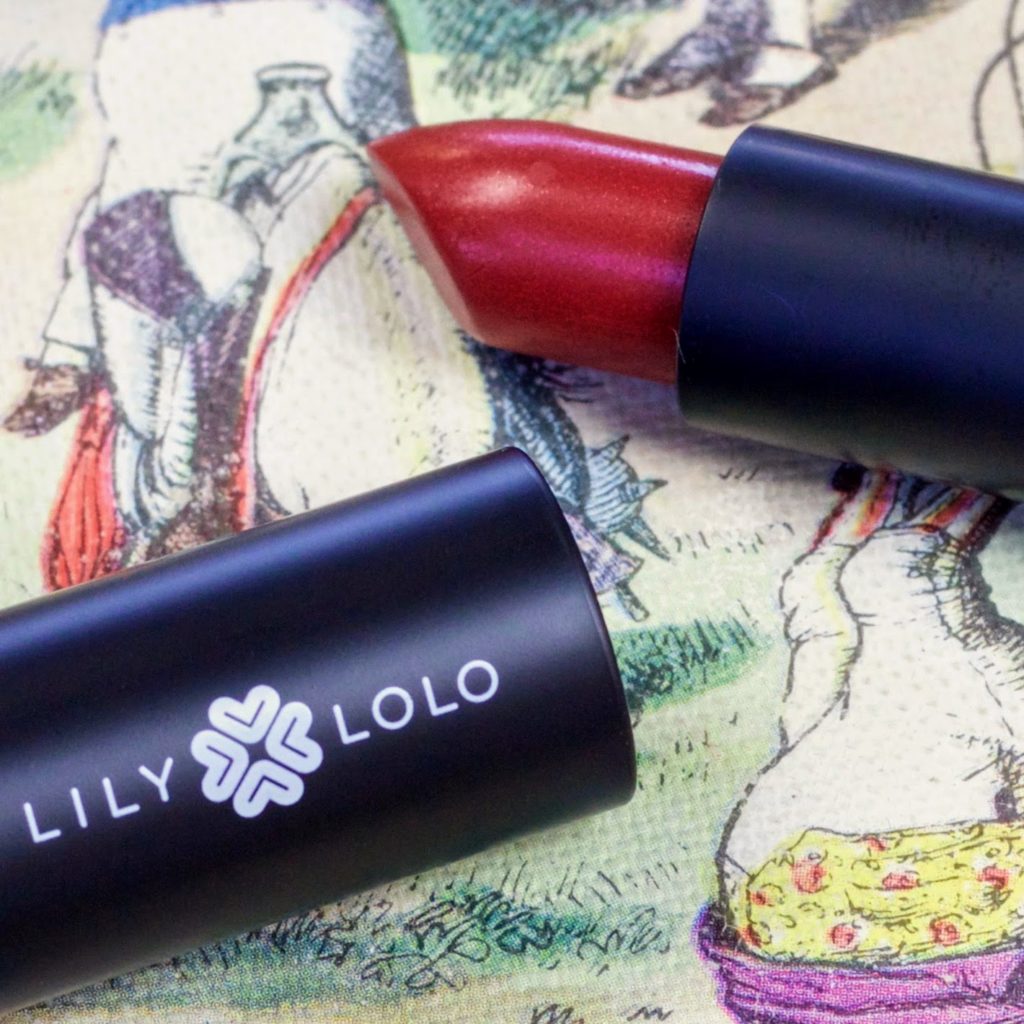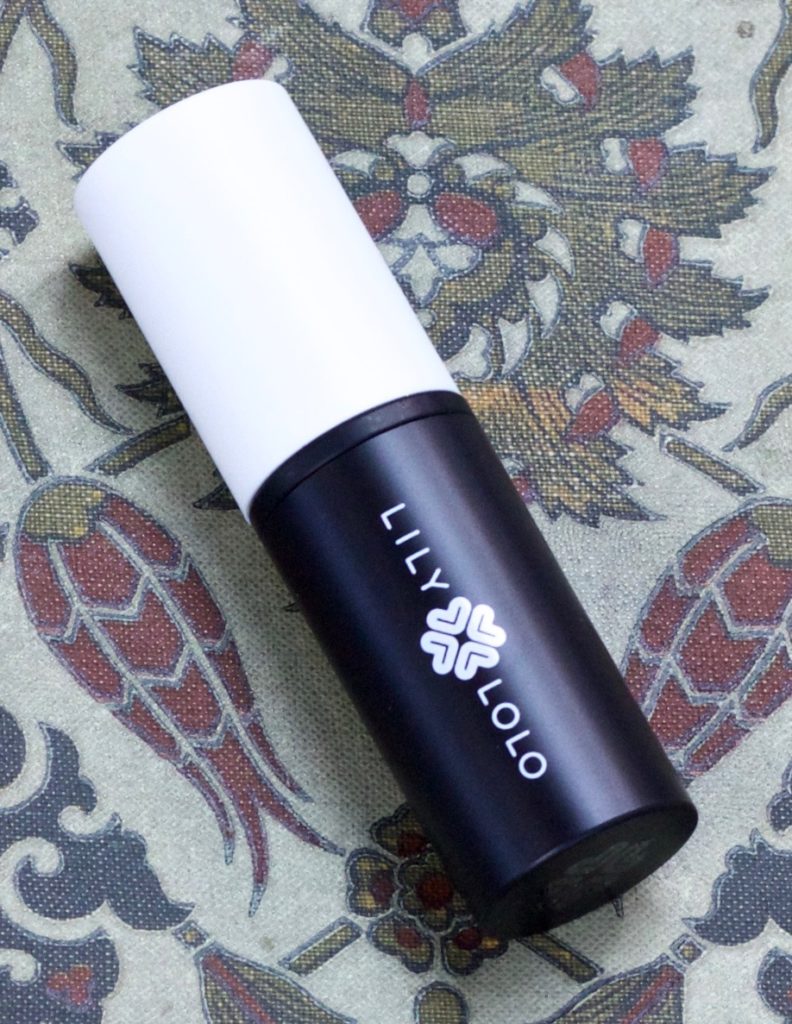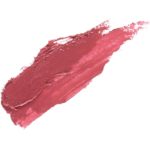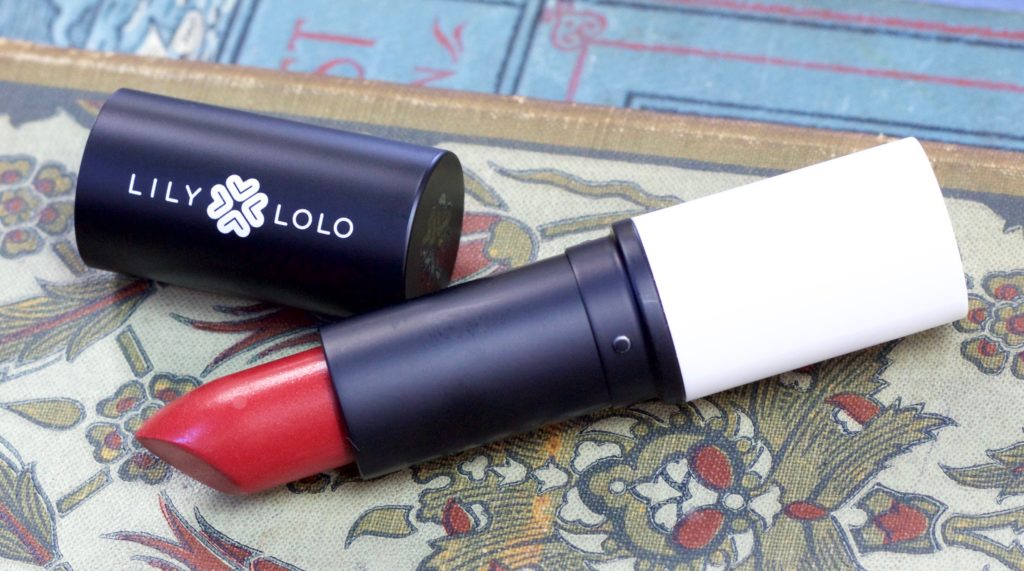 What makes it special
What makes it special
Here’s why I love my Lily Lolo Lipstick:
- The ingredients are clean and gluten-free. There’s no synthetic dyes, petrochemicals, parabens or synthetic fragrances. The base of the lipstick is made up of plant-based oils and waxes (castor, jojoba and candelilla).
- The lipstick performs exactly how I expect a lipstick to perform. There’s no need to make special allowances for sub-standard performance because it’s a “natural” makeup product.
- The packaging is chic and of high quality.
- The finish is creamy and flattering.
- It won’t make dry lips worse.
- If I forget to reapply after a meal or a long day, the lipstick doesn’t fade in a streaky or uneven manner. My lips simply hold onto some of the remaining pigment (like a stain) but otherwise look pretty.
- These lipsticks cost less than $20.

13 creamy shades

Lily Lolo’s lipstick is available in 13 shades. They range from pinks to peaches and reds to nudes. Compare them all here.
I’ve fallen in love with my shade, called French Flirt. It’s a red for people who can’t pull off red lips. Don’t be fooled by the deep reddish color—once applied, it’s much softer. Right on the boundary between pink and red, it’s the subtle-yet-polished color I’ve been looking for. It doesn’t scream “makeup!” like a true red, yet is more polished than a cutesy pink.
Inside the ingredients
The ingredient list is full of clean ingredients, and free of the problematic ones I seek to avoid.
Ingredients: castor oil, jojoba oil, candelilla wax, lanolin, isoamyl laurate, caprylic/capric triglyceride, beeswax, carnauba wax, maltodextrin, tocopherol, sunflower seed oil, ascorbyl palmitate, rosemary leaf extract, carmine, titanium dioxide.
| Extremely Safe | Reasonably Safe | Proceed with Caution | Insufficient Data |
 Lily Lolo’s lipstick isn’t vegan because it contains lanolin, which comes from sheep’s wool. But the lanolin does make the lipstick especially worthwhile for dry lips.
Lily Lolo’s lipstick isn’t vegan because it contains lanolin, which comes from sheep’s wool. But the lanolin does make the lipstick especially worthwhile for dry lips.
Also, carmine (a deep reddish pigment) is often derived from insects. As strange—and gross—as carmine sounds, it has a longstanding safety record. I’d choose carmine over a questionable synthetic pigment any day!
There’s something else very important to note in this ingredient list: All ingredients have been disclosed. When you find a product that stands by all its ingredients—like this one—that’s a good thing.
Finding the word fragrance on the ingredient lists of other products means the company behind the product has chosen to not disclose all ingredients. Thanks to the Fair Packaging and Labeling Act of 1966, fragrance is considered proprietary information and allowed to be hidden from consumers. So while you see that single word on the label, it may contain any number of secret ingredients.
But here’s the good news: more and more companies are choosing to disclose all ingredients in their cosmetics, thus empowering consumers like you to make a choice with your eyes wide open. Transparency matters. And that’s just another reason I love this product.
Staying power
This lipstick has good staying power—better-than-average in the green makeup world. But it won’t last through a meal, and will need to be re-applied once or twice during the day.

Tips for use
Lily Lolo Lipstick applies smoothly and evenly, so you don’t need to be a makeup pro to use it. (Shouldn’t that be a prerequisite of all lipsticks!? A girl can dream.)
Lily Lolo does recommend, however, that you blot your lips after applying, if applying a second layer. This helps to increase longevity of the lipstick.
Where to purchase
I bought my Lily Lolo Lipstick online at Credo Beauty. You can find it here for $18.
Highly Recommended
This product is part of my popular guide, The Shopper’s Guide to Natural & Nontoxic Makeup.
*This post is not sponsored. All opinions are my own.
**Products get makeovers too. Be sure to check if this product has been recently re-formulated before using it yourself.
